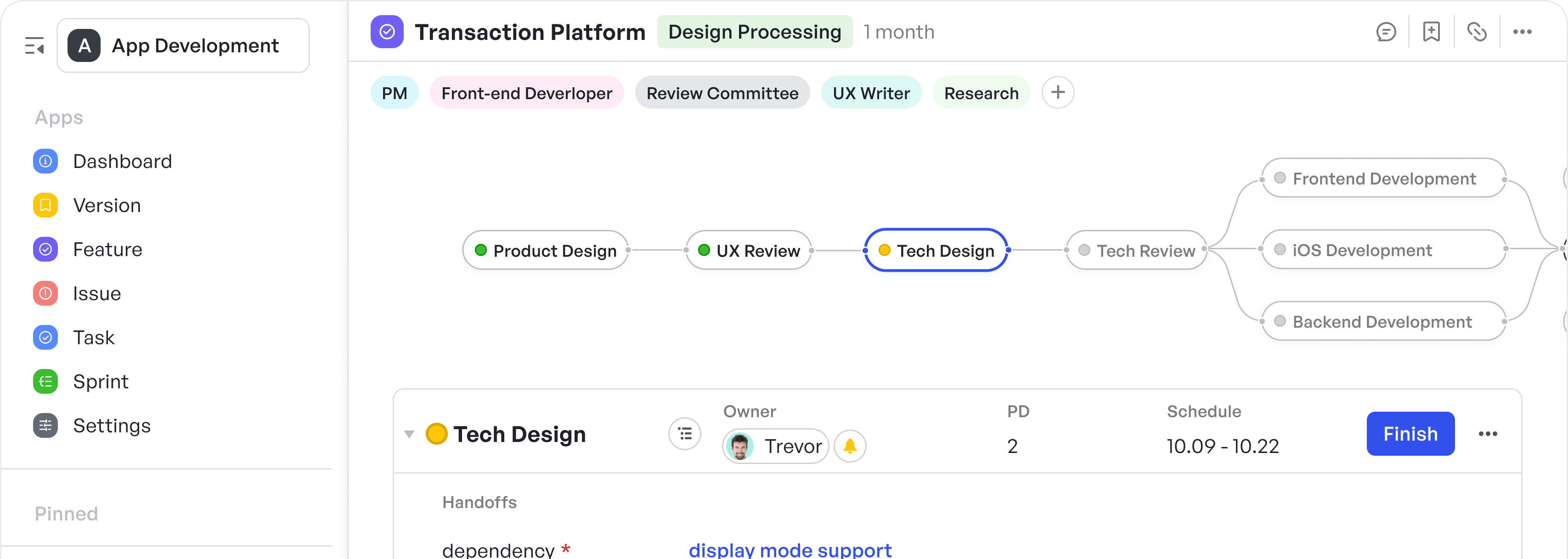Introduction
Granularity in project management refers to breaking down tasks into detailed, manageable components to improve execution, monitoring, and risk management. Whether you're focusing on granular planning or granular tasks, mastering these techniques can streamline complex projects and boost overall success.
What is Granularity in Project Management?
Granularity in project management refers to the level of detail and decomposition involved in breaking down project tasks and activities. It involves splitting larger tasks into smaller, more manageable components, allowing for precise planning, execution, and monitoring. This approach impacts various aspects of the project management process, including task breakdown, resource management, and the overall project timeline.
Importance in Task Breakdown
Granularity allows project managers to create a detailed task breakdown structure. By subdividing tasks, managers can allocate specific roles more effectively, identify potential challenges at an early stage, and set more achievable milestones. This level of detail helps in understanding the scope of the project comprehensively, ensuring all stakeholders have a clear vision of the required tasks and their individual contributions.
Role in Resource Management
With a granular approach, project managers can optimize resource allocation by assigning the right amount and type of resources to each specific task. This precision prevents resource wastage and overallocation, contributing to cost efficiency. Additionally, granular data helps in tracking resource utilization over the project’s lifecycle, making it easier to adjust resource allocation in response to any project changes or unforeseen obstacles.
Impact on Project Timelines
Granularity in project management plays a crucial role in defining and adjusting project timelines. Detailed task breakdowns make it easier to estimate durations accurately for each component of the project. This leads to more reliable project schedules with realistic timelines, minimizing the risk of delays. It also facilitates quicker adjustments to the schedule when tasks are completed ahead of schedule or encounter delays, thus enhancing the project's adaptability and responsiveness.
Granular Planning vs Traditional Project Planning
Granular planning and traditional project planning are two distinct methodologies that offer different advantages and face unique challenges. To understand these approaches better, here's a comparative overview in a table format that outlines the benefits and challenges of each method.
Analysis
Granular planning is particularly beneficial in projects where precision is critical, such as in software development or large-scale engineering projects where numerous small tasks contribute to a complex whole. This approach helps in closely monitoring progress, adjusting resource allocation, and managing project risks effectively.
Traditional project planning, on the other hand, might be more suitable for projects with a well-understood risk profile or where excessive detail could lead to analysis paralysis. It is often preferred in projects where speed and cost-saving are prioritized over detailed task management.
Choosing between granular planning and traditional project planning depends on the project’s needs, the industry, and specific project management objectives. Project managers should weigh these benefits and challenges carefully to determine the most appropriate approach for their specific context.
Benefits of Granularity in Project Management
Proper granularity acts as a powerful orchestrator within project management, ensuring harmony between vision and execution. By delving into how granularity facilitates each function of the project process, it's apparent that managing it with expertise is not merely a detail to be observed but a fundamental practice to be mastered.
Example & Free Template
Illuminating Project Pathways
Granularity in project management acts as a beacon, casting light on the intricacies of a project's course. When properly executed, it delineates every segment of the project journey, enabling teams to have a clear understanding of their individual and collective responsibilities. This granular roadmap is pivotal for navigating complex projects, especially when multiple stakeholders and diverse skill sets are involved.
Streamlined Task Delegation
The correctly calibrated granularity allows for the effective breakdown of tasks, fostering a climate where work is allocated based on expertise and availability. This enhances the potential for quality outcomes, as each team member is accorded a detailed set of expectations and deliverables. Such strategic partitioning underlines the importance of every contribution and underscores the centrality of detailed planning for project success.
250px|700px|reset
加载中,请稍后
Granular Task Monitoring and Progress Tracking
A well-granulated project translates into an observable dashboard of progress and performance. Project managers can track the advancement of the project at various levels of detail, adjusting resources and timelines as and when needed. Real-time tracking means potential issues can be identified swiftly, allowing for quick course correction - an essential dynamic for maintaining project momentum and preventing derailment.
250px|700px|reset
加载中,请稍后
Improved Risk Management
Granularity enhances the ability to foresee risks and prepare contingency plans. It ensures that each segment of the project is scrutinized for potential pitfalls, and appropriate risk mitigation strategies are put in place. This proactive stance on risk management is only possible when tasks and dependencies are identified and managed with the right degree of granularity.
Challenges of Granular Planning in Project Management
The dangers of too much detail can be as detrimental as too little, reducing productivity and miring teams in unnecessary complexity. Thus, challenges like analysis paralysis, risk of micromanagement, increased administrative overhead, over-planning, and loss of flexibility must be meticulously balanced against the benefits. In the next section, we will explore best practices that address these challenges, ensuring that granularity serves as a tool for success rather than an obstacle.
The Overwhelm of Microscopic Detail
While attention to detail is championed in project management, there is a threshold beyond which the granularity can become paralyzing. Excessive detail might bog down teams in the minutiae—each minor aspect of a project becoming a vortex of time and effort that could be better spent on higher-level objectives. Analysts and team members may find themselves scrutinizing needle-like issues in a haystack of tasks, leading to 'analysis paralysis,' where the decision-making process is stalled due to an over-abundance of choice and data.
The Pitfalls of Micromanagement
In projects with too fine a level of granularity, project managers may inadvertently slip into micromanagement—overseeing every tiny task to the extent that it stifles team autonomy and creativity. This approach can erode trust, hinder team members' ability to take initiative, and ultimately deflate team morale. Moreover, it shifts focus from strategic objectives to tactical minutiae, undercutting broader project goals.
250px|700px|reset
加载中,请稍后
Navigating Administrative Complexity
With detailed granularity comes the rise of administrative tasks, often proportional to the number of granular elements within a project. This can lead to an increase in the ‘Red Tape’ of project management—documentation, approvals, status updates—which in turn adds to the administrative burden. The corresponding complexity can obscure instead of clarify, diminishing the efficiency that proper granularity aims to enhance.
The Perils of Over-Planning
In projects where every possible scenario has been scrutinized, granularity can lead to an exhaustive and cumbersome planning phase, often at the expense of execution. Over-planning can delay the project's start and insidiously eat into time frames set for project milestones, ensuing deadline pressures that could have been avoided.
Flexibility and Responsiveness Compromise
Highly detailed plans might lead to inflexibility, where adapting to changes becomes more cumbersome due to the sheer number of details that need revising. In an age where agility and adaptability are paramount, overly granular projects can struggle to pivot, potentially rendering them less competitive and innovative.
Granularity vs. Scope in Project Management
In project management, understanding the distinction between granularity and scope is crucial for effective planning and execution. Here's an exploration of how these two concepts differ and interact within the context of project management.
Differentiation between Granularity and Scope
Granularity in project management refers to the level of detail at which project tasks and activities are defined and managed. It's about how finely a project's components are broken down into subtasks. Higher granularity means tasks are divided into more detailed, smaller pieces.
Scope, on the other hand, defines the overall boundaries of what the project is set to achieve, including the total amount of work involved. It sets the limits for what the project will deliver, encompassing all tasks, objectives, deliverables, and boundaries. Scope is concerned with the "what" of the project, while granularity deals with the "how" at a detailed level.
Conceptual Clarification between Granularity and Scope
Granularity can be seen as the resolution at which you view the project. It’s about the intricacy of steps and processes within the project’s scope. For instance, a low granular view might just divide the project into large phases like initiation, planning, execution, and closure, whereas a high granular approach could detail every individual task and subtask required in each phase.
Scope defines the reach and ambit of the project. It covers all the tasks necessary to complete the project objectives but does not specify how these tasks are structured or detailed – that’s where granularity comes in.
Examples Illustrating their Interaction
- Adjusting Granularity Affecting Scope:
- Increasing Granularity: For a software development project, increasing granularity might involve breaking "Develop Feature A" into smaller tasks like "Write Code for Feature A," "Test Feature A," "Debug Feature A," and "Document Feature A." While this doesn’t change the overall scope (to develop Feature A), it allows for more precise management and potentially highlights needs for additional resources or time, indirectly affecting the scope's perceived constraints.
- Decreasing Granularity: Simplifying task breakdowns might overlook certain necessary subtasks, risking scope creep as unnoticed requirements emerge later, ostensibly expanding the project’s scope without formal acknowledgment.
- Adjusting Scope Affecting Granularity:
- Expanding Scope: If a project scope is expanded to include additional features, the granularity of planning and task management must increase accordingly. New tasks must be defined and detailed to fit into the existing project structure.
- Narrowing Scope: Reducing the project’s scope, perhaps by removing a planned feature, would decrease the need for related tasks’ granular management, simplifying the project structure.
In conclusion, while granularity and scope are distinct concepts, they are closely linked. Effective project management requires a balance between the two, ensuring that detailed task management (granularity) aligns with the project’s goals and boundaries (scope). Understanding and navigating the interplay between these aspects can lead to more successful project outcomes.
How Granularity Affects Project Management Methodologies
Different project management methodologies have distinct approaches to handling granularity, adapting various levels of detail according to their specific processes and goals. Here’s a look at how granularity is managed in three popular methodologies: Waterfall, Agile/Scrum, and Kanban.
Waterfall: Granularity in Sequential Phases
In the Waterfall methodology, projects progress through sequential phases such as conception, initiation, analysis, design, construction, testing, deployment, and maintenance. Granularity in Waterfall is typically high, with each phase requiring detailed planning and execution. This method emphasizes a thorough documentation process where every task and subtask is identified and described before the project begins. The high level of detail helps in minimizing risks but can also lead to rigidity, as it becomes challenging to make changes once a phase has commenced.
Agile/Scrum: Granularity in Iterative Sprints
Agile methodologies, particularly Scrum, handle granularity through iterative cycles or sprints. Each sprint, typically lasting two to four weeks, involves planning, execution, and review of a set of granular tasks that contribute to the project’s overall goals. This approach allows for flexibility and adaptability, as granularity can be adjusted in each sprint based on feedback and changes in project direction. The regular reassessment of task detail and priorities helps teams remain focused on delivering value effectively, accommodating changes without significant disruptions.
Kanban: Granularity in Continuous Workflows
Kanban is known for its continuous workflow, visualized through a Kanban board. Granularity in Kanban involves breaking down the work into smaller, manageable pieces that are visually represented as cards on the board. This method allows teams to see the progress of individual tasks in real-time as they move from one stage to the next (e.g., from "To Do" to "Doing" to "Done"). The granularity in Kanban is dynamic, as new tasks can be added anytime and existing tasks can be subdivided or combined based on the project’s evolving needs. This flexibility helps in managing workflow efficiently while adapting to new or changing requirements without disrupting the ongoing tasks.
Techniques for Managing Granularity of Projects
- Work Breakdown Structure (WBS):
This is a cornerstone project management technique where the project is broken down into smaller, more manageable pieces. By creating a WBS, you can define the project's granularity by establishing levels of detail that serve the project's needs.
250px|700px|reset
加载中,请稍后
- Milestones:
Setting clear milestones helps manage granularity by identifying significant points in a project timeline that matter most to stakeholders, without being too granular.
- Iterative Planning:
Using agile methodologies, this technique allows for adjustments at regular intervals, managing granularity on the fly, based on the most current project conditions and outcomes.
- Progressive Elaboration:
This involves gradually increasing the level of detail in project planning as more information becomes available, allowing for refining the granularity as you go.
Setting up proper granularity in Meegle
- Project Hierarchy: Start by establishing a project hierarchy that categorizes your work into goals, epics, features, and issues. This hierarchy allows you to manage the project at different levels of granularity and ensures that all tasks align with larger objectives.
250px|700px|reset
加载中,请稍后
250px|700px|reset
加载中,请稍后
- Task Dependencies and Prioritization: Use Meegle to set dependencies between tasks and prioritize them. This helps in managing the flow of work and ensures that team members focus on the right tasks at the right time.
250px|700px|reset
加载中,请稍后
(Decompose the standard project process into nodes and add subtasks to the nodes)
- Custom Fields and Labels: Utilize custom fields and labels to add specific details that are important for your project's context. This additional information helps to increase or decrease the granularity based on the needs of stakeholders.
250px|700px|reset
加载中,请稍后
Software for Managing Granularity in Projects
Choosing the right project management software is crucial for handling the granularity of tasks effectively. Below, we review some of the best project management tools, including Meegle, Jira, Trello, and Monday.com, focusing on how they help manage different levels of detail, task dependencies, timelines, and tracking.
How These Tools Enhance Project Management:
Meegle:
- Strengths: Excellent for visual project planning and tracking, with Gantt charts and detailed task breakdowns.
- Use Case: Best for teams needing rigorous project scheduling and detailed dependency mapping.
Jira:
- Strengths: Strong in handling complex projects, ideal for teams using Agile methodologies.
- Use Case: Suitable for software development and large-scale projects where tracking sprint progress and issues is critical.
Trello:
- Strengths: Highly flexible and user-friendly, perfect for smaller teams or projects that require less granular detail.
- Use Case: Works well for marketing campaigns, event planning, and other projects with changing priorities.
- Strengths: Very customizable and suitable for a broad range of projects, offering powerful automation and reporting features.
- Use Case: Ideal for multifaceted projects in dynamic environments such as startups, operational planning, and cross-department projects.
Each software tool offers unique features that cater to different types of projects and management styles. By understanding how these tools handle project granularity, teams can select the best software to meet their specific needs, ensuring detailed task management and efficient project execution.
Training and Knowledge Sharing
- Project Management Institute (PMI) PMI offers various articles, white papers, and courses, which often cover the topic of project task breakdown and granularity. You can look for specific resources on their website based on the "Work Breakdown Structure (WBS)" which is a key principle related to granularity.
- Coursera Search for project management courses on Coursera that will often cover the concepts of task breakdown and granularity. Courses such as "Project Management Principles and Practices" will include relevant modules.
- Lynda.com - Now known as LinkedIn Learning, offers a range of project management training videos and tutorials which can give you a more granular understanding of granularity itself.
- MindTools.com - Offers a variety of resources and articles on project management, including tools and templates for implementing effective granularity in your projects through task delegation and milestone development.
- GanttPRO Blog - Contains multiple articles and tips on creating Gantt charts and work breakdown structures that heavily relate to project granularity.
FAQs
- What is the difference between task management and project management?
- What is the difference between task management and project management?
Task management focuses on organizing and managing individual tasks related to daily operations or specific, independent responsibilities. It is generally simpler and involves tasks tracking, and prioritization. Project management, on the other hand, encompasses the comprehensive management of an entire project, from initiation to closure, including planning, resource allocation, risk management, and stakeholder communication. It deals with longer-term goals and often requires coordinating a series of interlinked tasks to achieve broader project objectives.
- Can task management tools handle projects?
- Can task management tools handle projects?
Task management tools are well-equipped to handle smaller or less complex projects that do not necessitate detailed planning across various phases or extensive resource management. However, for larger projects that involve multiple team members, stages, or significant aspects of change management in project management, a dedicated project management tool is more appropriate. These tools provide specialized features specifically designed for large-scale project coordination, including rigorous change management processes.
- What is the best software for both project and task management?
- What is the best software for both project and task management?
The best software for handling both project and task management often provides a hybrid approach. Meegle is a good example, as it offers flexibility and features for managing day-to-day tasks through a straightforward interface while also supporting broader project management functionalities like planning timelines, resource allocation, and progress tracking. Other notable options could include Asana and Monday.com, both of which are versatile enough to cater to various degrees of project complexities and task management needs.





